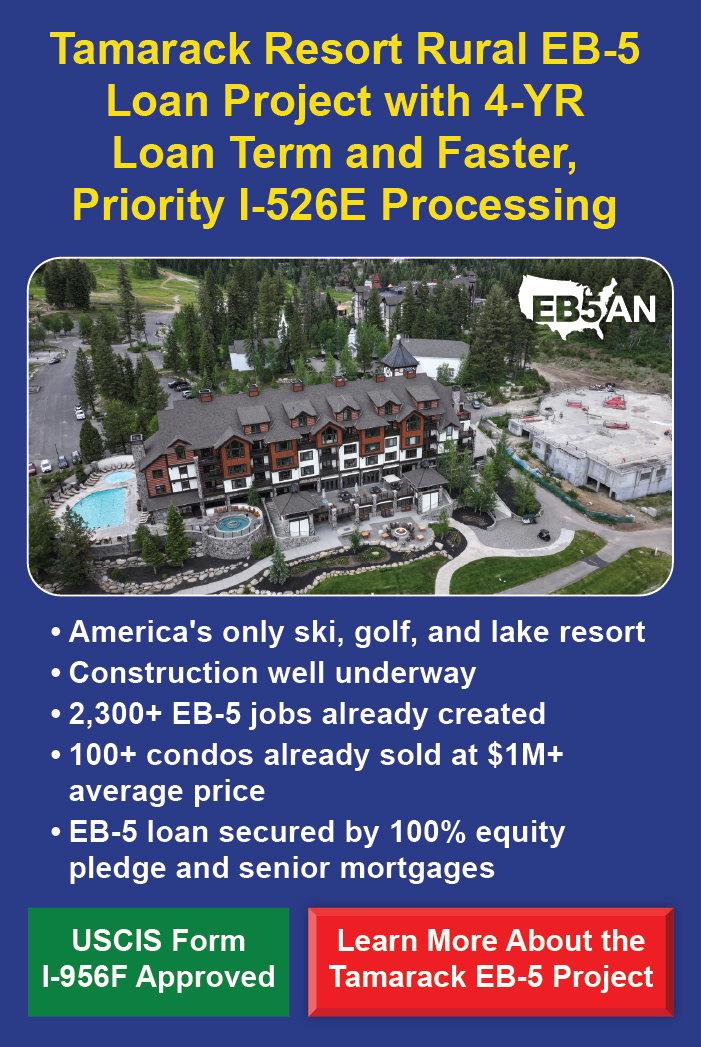
The U.S. tech sector, which includes a large number of H-1B visa holders, has been volatile in recent years. In 2022, about 150,000 white-collar employees were laid off and many job offers were revoked. Tens of thousands of tech workers lost their jobs during the first few months of 2024.
Many tech workers come to the United States on H-1B visas. Between 2019 and 2022, more than 45,000 H-1B foreign workers were hired. Indian nationals represent nearly three-fourths of that number.
If you’re one of them, it makes sense to plan ahead. Continuing rounds of H1B layoffs are likely to affect you or people you know. Unfortunately, you cannot count on job security or new employment with many tech companies. It’s not always easy or quick to find a new employer in this job market.
In this article, we will explain what you can do if you’re affected by an H-1B layoff.
What Happens If H-1B Workers Are Laid Off?
The 60-Day Grace Period
Potential Actions to Take During Grace Periods
- Find a New H-1B Role
- Find Employment Under a Different Visa Type
- Request a Change of Nonimmigrant Status
- File an Application for a Compelling Circumstances Employment Authorization
- File an Immigrant Visa Application (Adjustment of Status)
Live Permanently in the United States With an EB-5 Visa
Invest in Low-Risk Projects With EB5AN
What Happens If H-1B Workers Are Laid Off?
The H-1B is a popular and temporary nonimmigrant visa. In 2023, more than 780,000 foreign nationals submitted petitions. Visa holders must have employment sponsors.
Such workers may be required to leave the United States and return to their home country with little notice if they are laid off and cannot find a new employer quickly.
If an H-1B worker is fired, the following may eventually happen if they do not secure new employment:
- They lose their non-immigrant status and cannot remain in the United States.
- Any family members on dependent H-4 visas will also have to leave the country.
- Any family members working on an employment authorization document will no longer be able to work in the United States.
But they can avoid this if they act fast.
The 60-Day Grace Period

Before 2017, H-1B holders had no extra time to find new employment after being fired. They were required to leave the United States immediately after being let go.
Fortunately for everyone now on an H-1B visa, a revised USCIS policy went into effect in January 2017 that gives foreign workers additional time and flexibility.
An H-1B visa holder now gets a grace period that allows them to look for a new job or adjust their visa status. Workers are eligible for this benefit regardless of whether they are fired or voluntarily leave their jobs.
The duration of this grace period is the shorter of either:
- 60 consecutive calendar days.
- Until the end of their authorized validity period.
If you are an H-1B holder who has not found a new employer, you must depart the United States at the end of this time frame. You will no longer have a valid status.
Failure to comply may mean being deported or facing additional difficulties if you attempt to re-enter the United States at a later date. Staying for six months or longer past an authorized period means you cannot come back to the country for at least three years.
The grace period begins the day after your last paid day from your job and if your I-94 is still valid. You can keep your authorized status by doing one of the following during that time frame:
- Filing for a change of nonimmigrant status.
- Filing for adjustment of status.
- Filing for a “compelling circumstances” employment authorization document.
- Changing your employer.
Here are a few considerations to keep in mind when you apply:
- Keep track of exactly when your 60 consecutive calendar days will be up from the last day of employment at your job.
- Ask your H-1B sponsor to not revoke your H-1B visa. Explain this will make it easier to transfer your H-1B status to a new position.
- Review the USCIS policy guidance mentioned above.
Let’s take a closer look at each of the options to maintain a legal status in the United States.
Potential Actions to Take During Grace Periods

An H-1B holder who wishes to remain in the United States can pursue one of several courses of action during the 60-day grace period.
Find a New H-1B Role
If the holder finds new employment during the grace period, the new employer files a petition on the employee’s behalf to extend their stay in the United States. The employee would thus keep their nonimmigrant status.
Each foreign worker is eligible for one 60-day grace period for each employer’s authorized validity period. With each new employer petition approval, another grace period is possible.
So, if you are fired by Employer A, you may be approved for maintaining status for 60 days to conduct a job search or change status. If you then begin employment with Employer B and have a new petition validity period, you may qualify for another 60-day grace period under Employer B if you are subsequently terminated.
Find Employment Under a Different Visa Type
Another option is to pursue another nonimmigrant visa category that allows you to continue working in the United States. Here are a few examples of such programs:
- TN: Applies to Canadian or Mexican nationals, who can work in the United States in professions identified under the North American Free Trade Agreement.
- E-2: Applies to nationals of countries that have a treaty of commerce and navigation with the United States. A qualifying investment in a U.S. company is required.
- O-1: Applies to those with extraordinary ability in art, athletics, business, education, or science.
- L-1: Applies to employees of multinational companies who have specialized knowledge or occupy a management or executive position.
You must file during the grace period to be eligible for work under another visa category.
Request a Change of Nonimmigrant Status

If your priority date is current, another option is to adjust your immigration status.
For example, an H-1B holder can become an international student via the F-1 program, as long as they participate in an approved program of study. F-1 students are eligible for limited employment opportunities.
An alternative is to change status to become a B-1 or B-2 visitor and travel around the United States. B-1 and B-2 visitors cannot legally work in the country, but they may search for new employment and participate in interviews while in a B-1 or B-2 status. They must change this status before beginning work.
A worker may also become a dependent of their spouse under the H-4 or L-2 programs and remain in the country.
An adjustment of status application must be delivered to the United States Citizenship and Immigration Services (USCIS) before your last day on the job. A late petition means that you will probably be denied.
File an Application for a Compelling Circumstances Employment Authorization
The Compelling Circumstances Employment Authorization Document is another possibility for laid-off workers who have an approved I-140.
To be approved, you must show that you face major hardship. Consult USCIS guidance and an experienced immigration attorney for a better sense of whether you qualify and whether this is the right approach for you.
File an Immigrant Visa Application (Adjustment of Status)
If you have a strong background in science, technology, engineering, or math, you may wish to apply for a Green Card under the EB-1 program.
However, for many applicants (especially those who have the required capital), applying via the EB-5 program is the better course of action. It’s a fast and reliable pathway to lawful permanent resident status in the United States.
Live Permanently in the United States With an EB-5 Visa
A Green Card holder has the right to live and work anywhere in the United States regardless of their employment status. In addition, an EB-5 visa comes with the following major benefits.
EB-5 Visa Benefits
- Lawful permanent resident status in the United States for yourself and eligible dependent family members (spouse and unmarried children under the age of 21).
- No restrictions on employment with private sector U.S. companies (but restrictions on employment with the federal government may exist).
- Access to U.S. healthcare, insurance, retirement, and other benefits.
- Freedom to travel outside of the United States periodically.
- No requirement to reapply for lawful permanent residence status.
Applying for an EB-5 visa is a desirable choice for many Indian nationals on H-1B visas and their families.
EB-5 Program Requirements
USCIS administers this program. Completing the EB-5 application process comes with many professional and personal benefits, as long as the applicant fulfills the program’s requirements. These include:
- Invest the correct amount in a new commercial enterprise: ordinarily $1,050,000, or $800,000 for a project located in a targeted employment area.
- Choose either a direct or regional center investment.
- Ensure the investment creates at least 10 full-time jobs for U.S. workers.
- Submit the required documents for each family member (including marriage certificate, birth certificates, etc.) and respond to any questions or requests for evidence from USCIS fully and accurately.
Even though it is not an explicit requirement, working with an experienced immigration lawyer is highly recommended to help you navigate the complexities of the EB-5 process.
How to Apply for an EB-5 Visa
EB-5 investors must complete four main steps to receive lawful permanent resident status for themselves and their family members:
- Find the right EB-5 project.
- Invest the required capital.
- File Form I-485 and Form I-526E.
- Obtain conditional permanent resident status.
- File Form I-829 and remove conditions on lawful permanent resident status.
This is a broad overview, and the process can get complicated. However, it’s much easier if you work with an expert team.
Invest in Low-Risk Projects With EB5AN

We at EB5AN have a strong track record of helping H-1B holders from India (and many other countries) to obtain Green Cards for themselves and other family members as part of the EB-5 visa process. Rahul’s experience is one of our many success stories.
EB5AN has helped more than 2,300 families from 60 countries relocate to the United States as lawful permanent residents. Our expert team has more than a decade of experience, and offers clients first-rate, low-risk EB-5 regional center projects with a 100% USCIS project approval rate to date.
Please book a free call with us today to learn more











